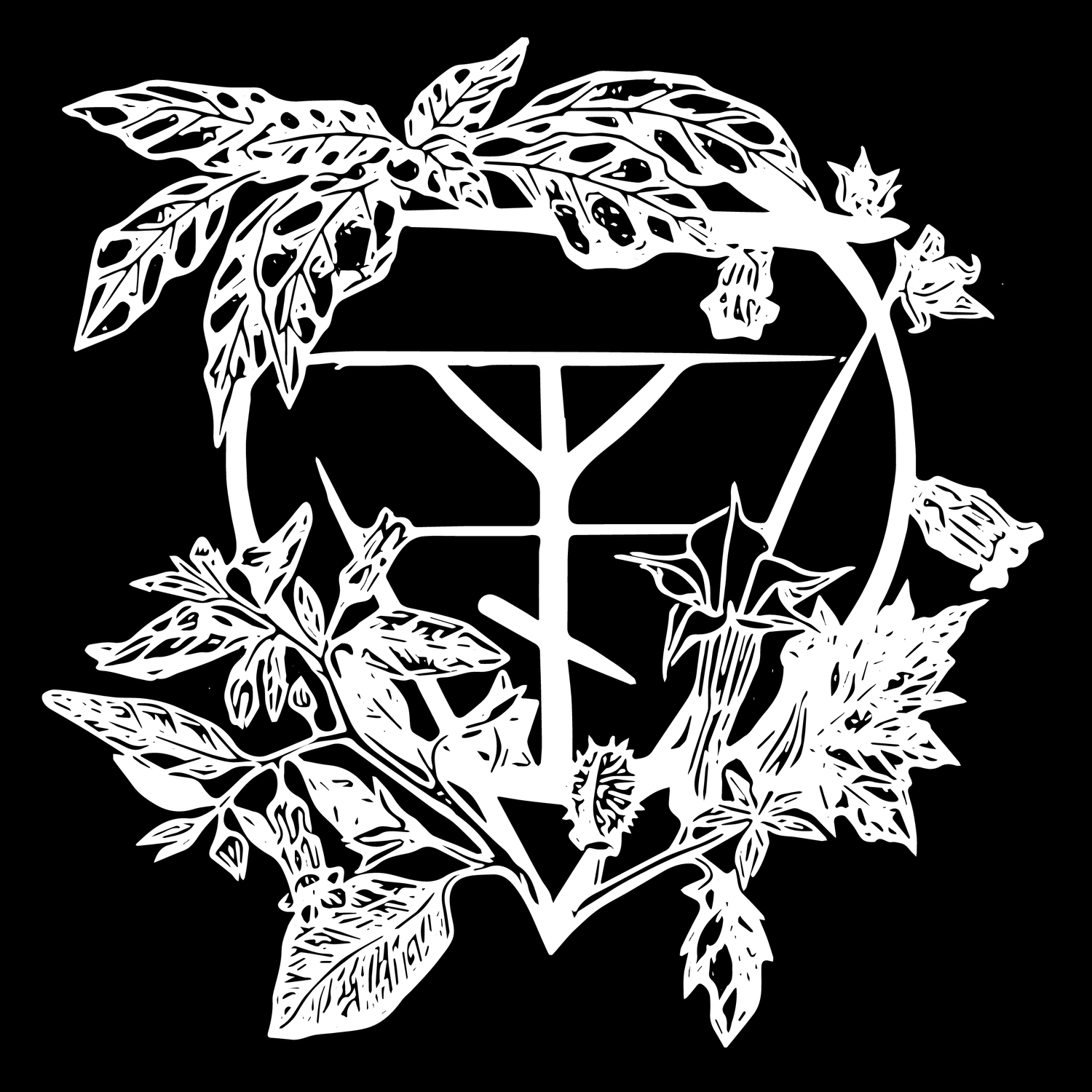Praise for The Poison Path Grimoire
The Poison Path Grimoire: Dark Herbalism, Poison Magic, and Baneful Allies by Coby Michael, Rochester, VT: Destiny Books, 2024.
With my interest in medicinal herbalism, I was attracted to this book by its title. Its content opened me to many new ideas. Poison can mean many things as found in medicine, magic, religion, witchcraft, and folklore with intricate connections between the spirit of the plant and its poisonous essence. Rituals bring us to achieve plant spirit communication that can open us to the knowledge of how to access the medical uses of these poisonous plants. Poison as a metaphor describes its threat to patriarchy with its henchmen, capitalism and religion. Whether we consume only the spiritual essence of a plant, or ingest a portion of it, the dosage is central in working with these poisons. The poison path is not just working with plants, it explores the spiritual and the dark unseen underworld force it has on humans. This dark unseen underworld part of ourselves can include what has been called our shadow, that part of us that we could value but deny with the feeling that it is unacceptable or a poison within us. Uncovering our shadow and its positive force in our lives has been a big part of my work as a psychologist as I wrote about in my book Ecstatic Soul Retrieval. The poison plant can be a most powerful ally when it comes to giving direction to our destiny. Belladonna, the nightshade family, henbane, datura, the magic mushrooms, the hallucinogenic and psychedelic plants, St. John’s wort, and the thorny plants like hawthorn, blackthorn, and even the rose with its thorns symbolizing its hidden dark side to its beauty, have powerful places on the poison path. The venom of the Garden of Eden’s tree of knowledge may be thought of as the first plant on our poison path, a plant that opened the door for Eve to enter the patriarchal world of dichotomies as I have written about extensively in my book, The Voices of Genesis.
In the ancient world, poison magic and witchcraft were synonymous, with the people of many cultures fearing the primal forces of poison and witches, women who were elevated to folk heroes and allies. Pestilent spirits were associated with death, graves and graveyards where many of these plants grow. Another class of poisonous plants are the vampiric plants that suck or draw out our life force, parasitic and capable of causing death. These vampiric plants can also be a benefit for drawing out harmful energies and illness with plants such as garlic cloves and blackberry brambles that keep things out. Coby offers several recipes for salves for treating the problems caused by vampiric plants.
Another major area on the Poison Path are the plants used as aphrodisiacs for bringing glamour, drawing a partner, bringing fidelity, and sex magic. Again, recipes are offered. Another area is again shadow work that leads a person to embrace their shadow. “Plants are used in conjunction with other wellness practices. Using various techniques of energy work such as breathing, or body postures, can lead us to influence the direction and flow of our plant spirit work. Shamanic postures are used to travel to other worlds and generate altered states.” “Drumming enhances the effects of plants and facilitates trance states for healing and moving energy.” These quotes from the book (pg. 79-80) directly relate to my use of postures and drumming as a certified instructor of ecstatic trance as taught by Felicitas Goodman and the Cuyamungue Institute. She discovered that specific postures used by hunter-gathering shaman can lead a person to greater health, for shapeshifting, divination, journeying in the three worlds, (lower world, middle world, and upperworld) and to promote death-rebirth experiences as I write about in my nine books, beginning with The Power of Ecstatic Trance.
Plants are not good or evil, but like all forces of nature, are powerful, some threatening to humans, and some for healing and health. Coby offers homeopathic preparations and flower essences for a number of plants, offering their vibrational remedies, including Foxglove, Monkshood, Datura, Poison Hemlock, and Deadly Nightshade. The book concludes by offering rituals for several different situations, a section I found most exciting with many parallels to my work with ecstatic trance, of smudging and calling the spirits of each direction to define the sacred space, breathing to quiet the mind, and holding an ecstatic posture while going into trance for fifteen minutes, induced by rapid drumming to stimulate the nervous system.
The Poison Path Grimoire was especially meaningful to me in broadening my repertoire of tools with the use of plants and ways of calling the spirits in my work with ecstatic trance for healing and spiritual growth, for communing with my ancestors, spirits of the earth, and the spirits of the mythic stories of antiquity.
Nicholas E. Brink, PhD
Author of
The Voices of Genesis: Listening to the Spirits on the Ecstatic Journey to Enlightenment in the Garden (Red Elixir)
Listening to the Spirits: Surviving the Coming Apocalypse with Ecstatic Trance (Red Elixir)
Loki's Children: Healing Stories of Antiquity, Shamanism and Psychotherapy (Red Elixir)
Ecstatic Soul Retrieval (publisher - Inner Traditions / Bear & Co.)
Power of Ecstatic Trance
Baldr's Magic
Beowulf's Ecstatic Trance Magic
Trance Journeys of the Hunter-Gatherers
Grendel and His Mother (publisher - Routledge)
Applying the Constructivist Approach to Cognitive Therapy: Resolving the Unconscious Past (Routledge)
